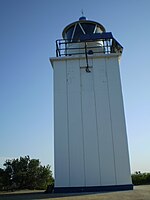Kurnell Refinery
1956 establishments in Australia2014 disestablishments in AustraliaBuildings and structures in SydneyEnergy infrastructure completed in 1956Kurnell, New South Wales ... and 2 more
Kurnell PeninsulaOil refineries in Australia

The Kurnell Refinery was a crude oil refinery located in Kurnell on Botany Bay, New South Wales, Australia. It had a refinery capacity of 124,500 barrels per day (19,790 m3/d). It was operated by Caltex Australia, and owned by the Chevron Corporation.
Excerpt from the Wikipedia article Kurnell Refinery (License: CC BY-SA 3.0, Authors, Images).Kurnell Refinery
Cook Street, Sydney Kurnell
Geographical coordinates (GPS) Address Nearby Places Show on map
Geographical coordinates (GPS)
| Latitude | Longitude |
|---|---|
| N -34.0173 ° | E 151.2164 ° |
Address
Cook Street
2231 Sydney, Kurnell
New South Wales, Australia
Open on Google Maps








